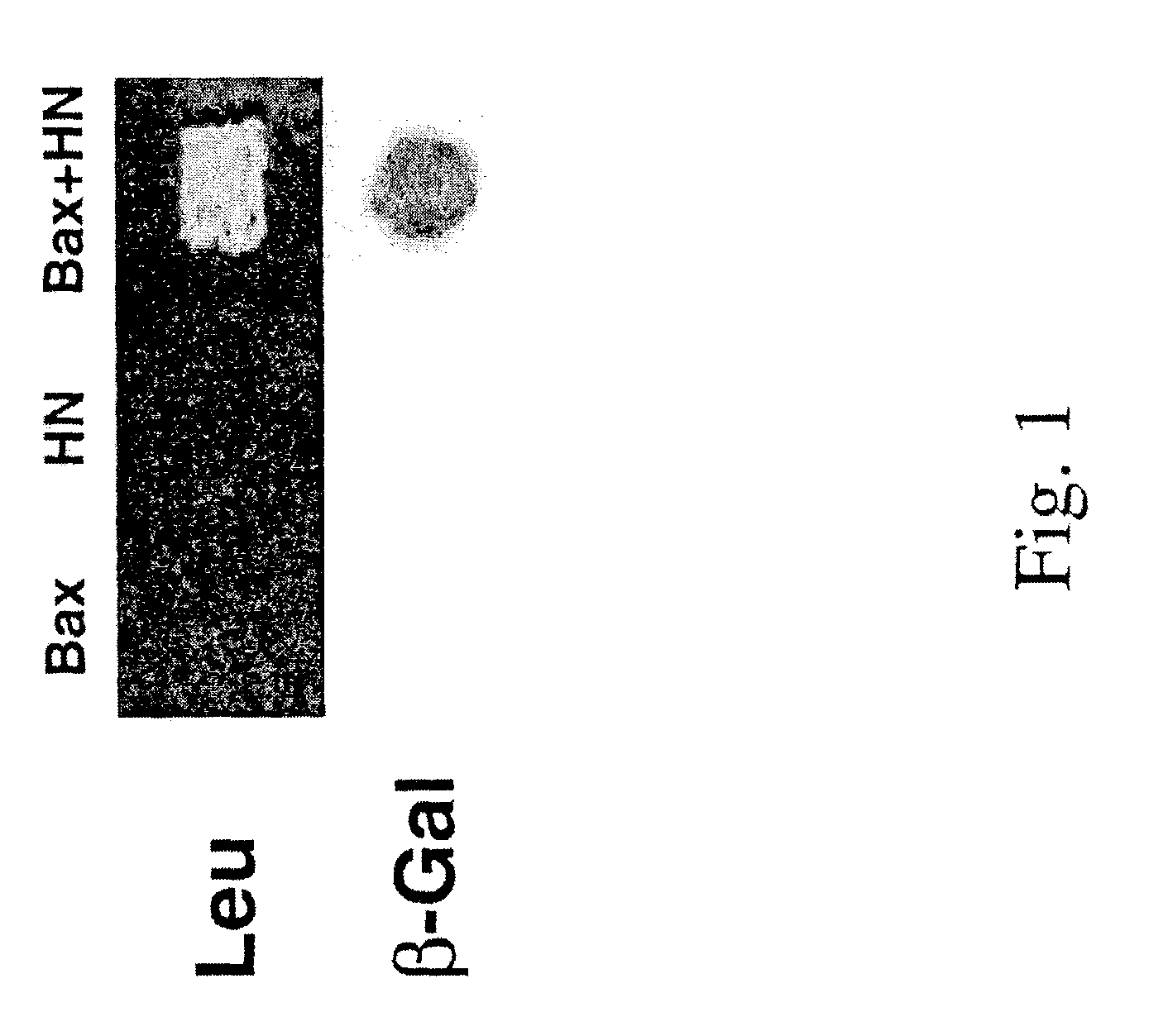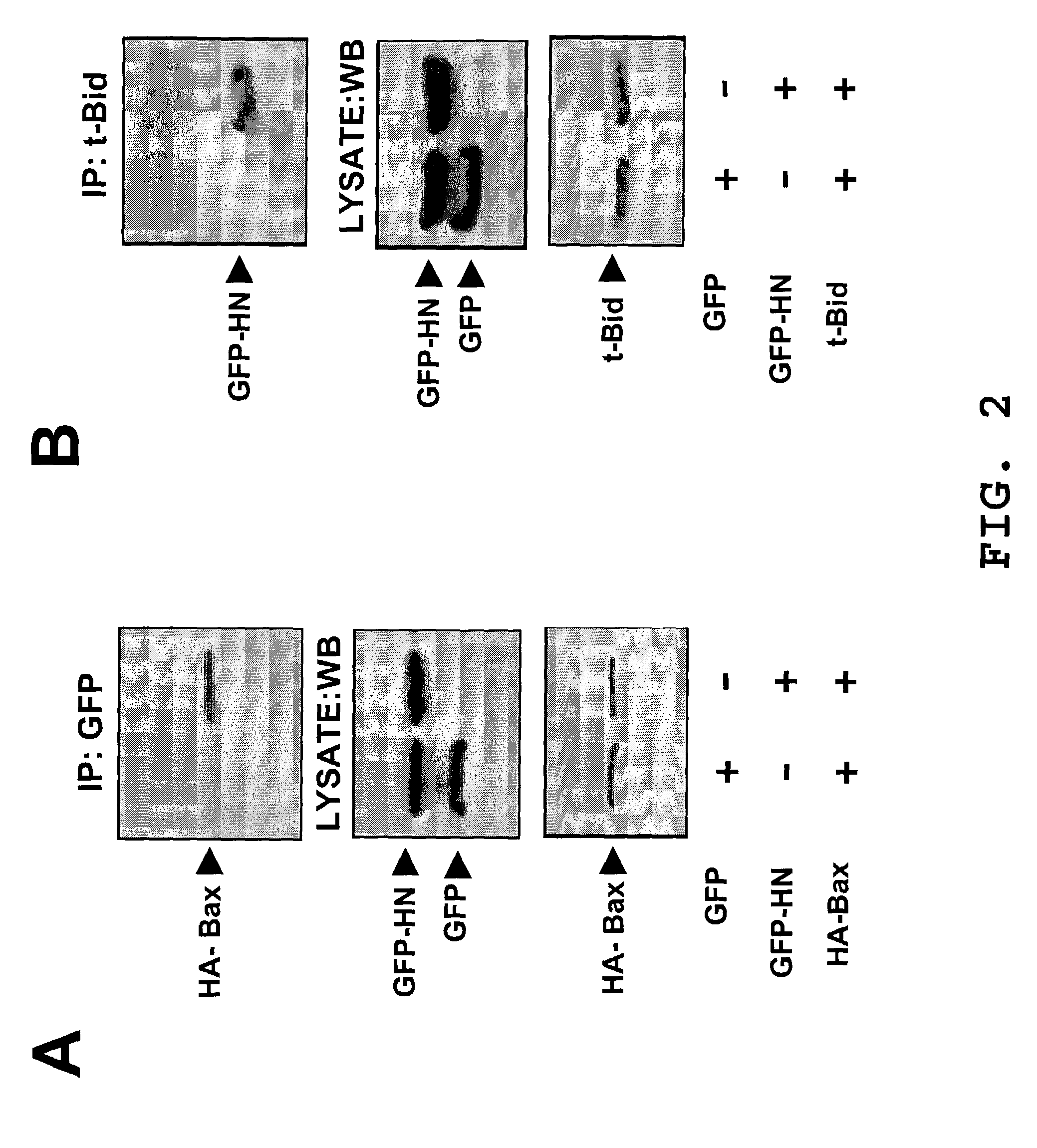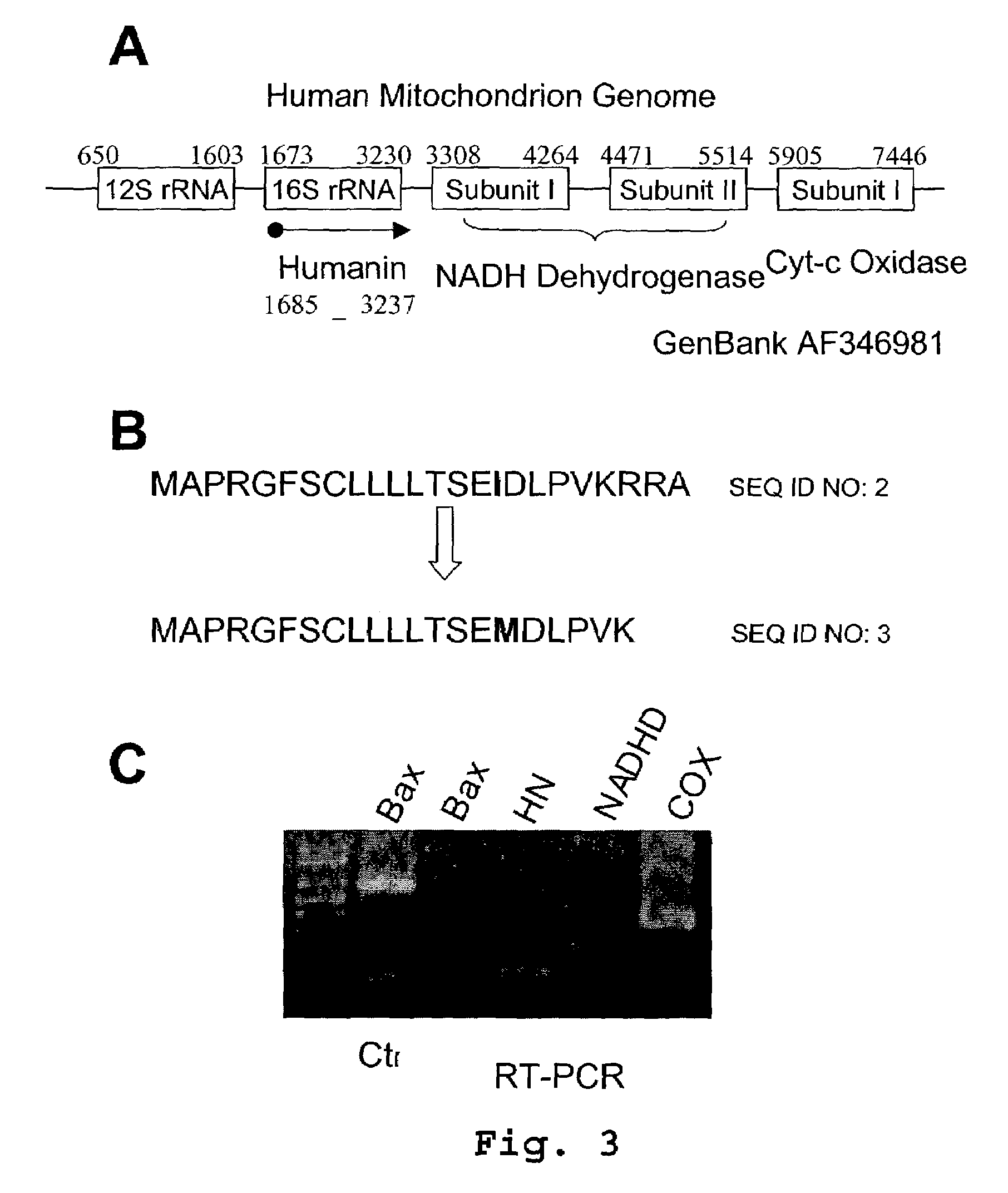Methods for identifying modulators of apoptosis
a technology of apoptosis and modulators, applied in the field of molecular biology and molecular medicine, can solve the problems of cell death, unintended neuronal cell death, inflammation and undesirable consequences,
- Summary
- Abstract
- Description
- Claims
- Application Information
AI Technical Summary
Benefits of technology
Problems solved by technology
Method used
Image
Examples
example i
Identification of Humanin as Bax Binding Target Using a Yeast Two-Hybrid Screening Assay
[0171]A yeast two-hybrid screening assay was performed to identify polypeptides that interact with an apoptotically-inactive mutant form of Bax. A yeast two-hybrid system is designed to screen a cDNA library for a gene encoding a polypeptide that interacts with a known target (bait) polypeptide (Golemis, et al., In Current Protocols in Molecular Biology, John Wiley & Sons, Inc., Ch.20.0 and 20.1.(1996); Mendelsohn and Brent, Current Opinion in Biotechnology 5:482-486 (1994)). In this experiment, a S184K (a serine at position 184 in the transmembrane domain mutated to a lysine) mutant of mouse Bax was used as a bait, since the wild type Bax induces cell death in yeast. The S184K mutant human Bax does not localize to mitochondria and does not induce apoptosis (Mechushtan et al., EMBO Journal 18(g): 2330-2341 (1999)).
[0172]Bax (S184K) cDNA was constructed in a pgilda yeast expression vector at EcoRV...
example ii
Interaction of Humanin and Bax: Co-immunoprecipitation and Cellular Co-localization
[0174]The following experiments confirm an interaction between Humanin and Bax. Similar experiments were performed to confirm an interaction between Humanin and Bid.
[0175]Humanin (HN) cDNA was sub-cloned into a Green Fluorescence Protein (GFP) expression vector GFP-Cl at the Xhol / Hind III sites, producing a GFP-HN fusion polypeptide. GFP and GFP-HN were transfected into 293T cells with pcDNA3-HA-Bax. Cell lysates from these cells were immunoprecipitated with anti-GFP antibody and subsequently blotted with anti-HA antibody. The lysates were also blotted with ani-GFP antibody to confirm polypeptide expression. Humanin was found to co-immunoprecipitate with Bax. The data shown were obtained using the cytosolic form of Humanin; however, both cytosolic and mitochondrial forms of Humanin were tested and the results were the same.
[0176]GFP-HN and a Red Fluorecence Protein (RFP) vector, RFP-Bax, were transfec...
example iii
Expression of Humanin in Mitochondria
[0177]Mitochondria were isolated from 5×106 293T cells using differential centrifugation. RNA was then isolated from the mitochondria using TriZol reagent (Gibco-BRL). The RNA was subjected to reverse transcription using an oligo-dT primer. The products of the reverse transcription reaction were digested with RNaseH and RNase A to remove any RNA. The remaining cDNA was used as a template for PCR reaction with primers specific for Bax, Humanin, NADHD and COX.
[0178]As seen in FIG. 3C, a product was detected for NADHD and COX which are known mitochondrial genes and no product was detected for Bax which is a cytosolic gene. However, a product was detected when using the Bax primers and a pcDNA3-Bax template demonstrating that the Bax primers are capable of generating a product. When using primers for Humanin with the mitochondrial cDNA, a product of the correct size was detected. The Humanin product was excised and sequenced and the sequence matched ...
PUM
 Login to View More
Login to View More Abstract
Description
Claims
Application Information
 Login to View More
Login to View More - R&D
- Intellectual Property
- Life Sciences
- Materials
- Tech Scout
- Unparalleled Data Quality
- Higher Quality Content
- 60% Fewer Hallucinations
Browse by: Latest US Patents, China's latest patents, Technical Efficacy Thesaurus, Application Domain, Technology Topic, Popular Technical Reports.
© 2025 PatSnap. All rights reserved.Legal|Privacy policy|Modern Slavery Act Transparency Statement|Sitemap|About US| Contact US: help@patsnap.com



